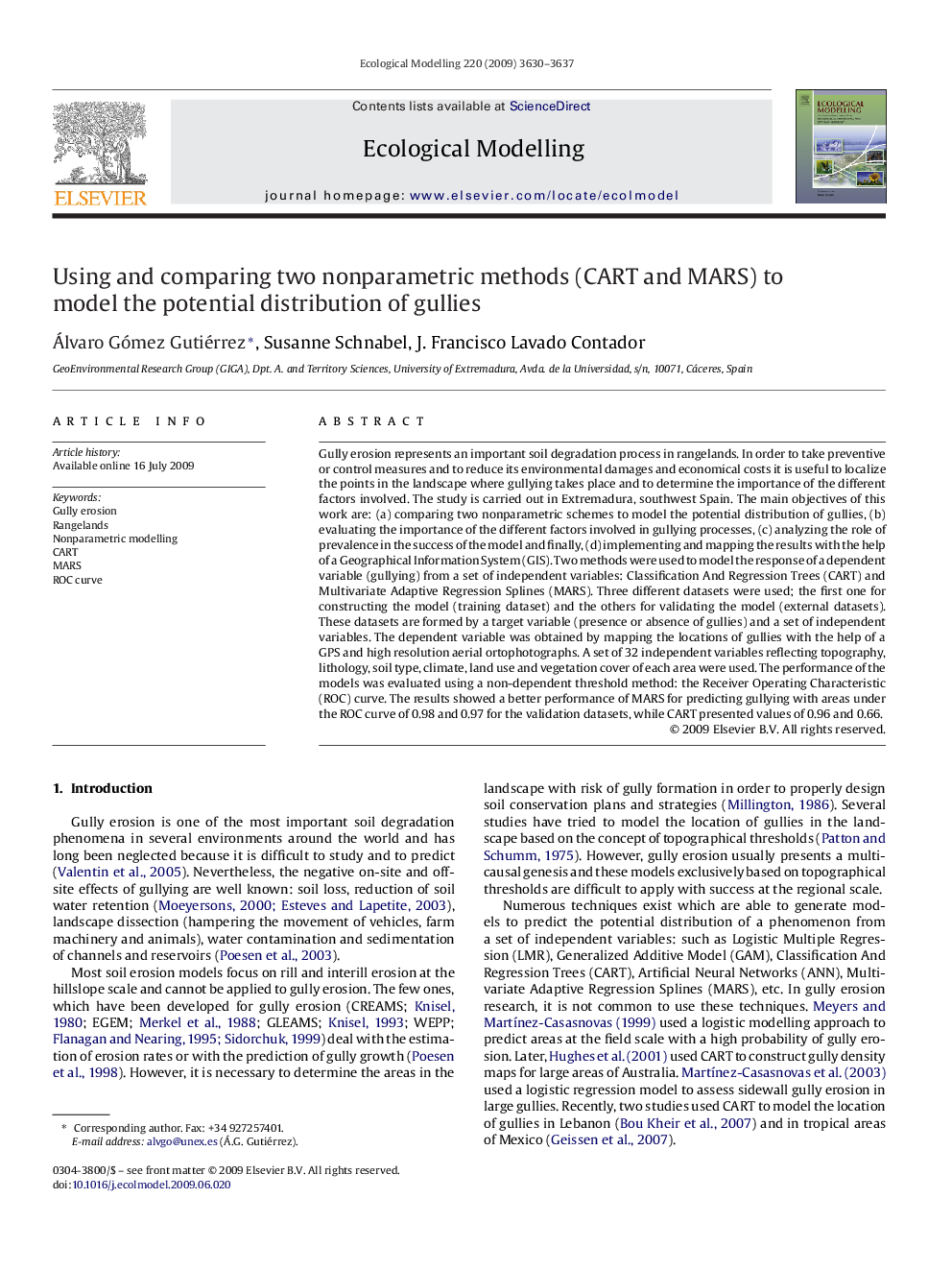| Article ID | Journal | Published Year | Pages | File Type |
|---|---|---|---|---|
| 4377519 | Ecological Modelling | 2009 | 8 Pages |
Gully erosion represents an important soil degradation process in rangelands. In order to take preventive or control measures and to reduce its environmental damages and economical costs it is useful to localize the points in the landscape where gullying takes place and to determine the importance of the different factors involved. The study is carried out in Extremadura, southwest Spain. The main objectives of this work are: (a) comparing two nonparametric schemes to model the potential distribution of gullies, (b) evaluating the importance of the different factors involved in gullying processes, (c) analyzing the role of prevalence in the success of the model and finally, (d) implementing and mapping the results with the help of a Geographical Information System (GIS). Two methods were used to model the response of a dependent variable (gullying) from a set of independent variables: Classification And Regression Trees (CART) and Multivariate Adaptive Regression Splines (MARS). Three different datasets were used; the first one for constructing the model (training dataset) and the others for validating the model (external datasets). These datasets are formed by a target variable (presence or absence of gullies) and a set of independent variables. The dependent variable was obtained by mapping the locations of gullies with the help of a GPS and high resolution aerial ortophotographs. A set of 32 independent variables reflecting topography, lithology, soil type, climate, land use and vegetation cover of each area were used. The performance of the models was evaluated using a non-dependent threshold method: the Receiver Operating Characteristic (ROC) curve. The results showed a better performance of MARS for predicting gullying with areas under the ROC curve of 0.98 and 0.97 for the validation datasets, while CART presented values of 0.96 and 0.66.
